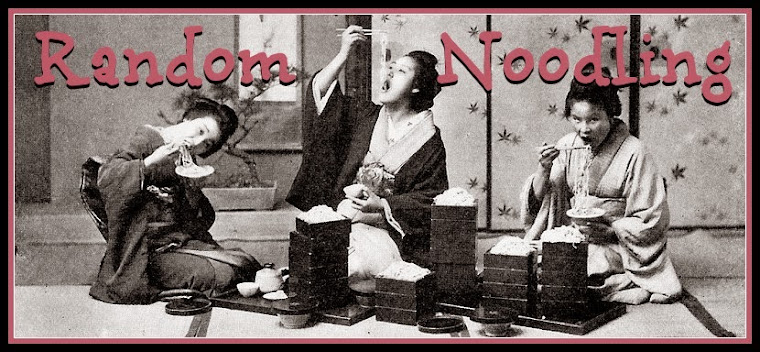[Please note: much of today's post has been stated here before, so if you're tired of a crazy, librarian-poet's ranting, you may want to skip this.]
In the morning, after feeding the cat and making coffee, I sit down and check the daily haiku posted at Mann Library's Daily Haiku hosted by Cornell University, Haiku in English hosted by The Mainichi, Japan's National Daily newspaper, and The Haiku Foundation (the daily haiku appears at the top of the page as part of the banner).
The Mainichi's haiku editor is Dhugal Lindsay, and he has selected the "Best of 2017" haiku that appeared throughout the year. The best are collected, with comments, in 68 pages, and presented as a PDF that you can download and read at your leisure. Lindsay has written the introduction. If you think haiku is just a three-line poem where syllable count is its most important feature, you need to read it.
Nowhere in the introduction does it mention three lines of 5-7-5.
Read through the haiku and you'd be hard-pressed to find one close to 17 syllables total. There are no in-your-face lessons taught by the haiku. No rhymes. No one tells you what conclusions to draw (except, on occasion, in the editor's commentary).
It is my hope that one day soon, a children's book editor comes across this "Best of 2017" introduction and takes it to heart. I would happily support any number of recent children's books that are subtitled, "Haiku about..., if only the subtitles were rewritten as, "Short poems about..." Right now, I read these books, gather what information the poet is trying to tell me about the world of naked mole rats or some other curriculum-related topic, and then shake my head at lost opportunities for a young reader to appreciate haiku.
Okay, rant over! I can't end without a haiku, now can I? Here's an ekphrastic one:
© Diane Mayr, all rights reserved. "Sleeping Cat" by Jacques-Émile Blanche.
Text:
a closer look...
the old cat's chest
slowly rises
Elizabeth Steinglass is hosting this week's Poetry Friday Round-Up. Liz is one of those people who understands haiku, and, she is now an award-winning haiku poet! Click here. Congratulations, Liz!


1. Thanks for the link to the PDF. You always enrich my understanding of poetry! 2. I adore the cat painting and the haiku. 3. I, too, struggle with the persistent assertion in picture books. (And confess half the time I'm afraid to call anything haiku, because I don't want to be wrong about what I've written!)
ReplyDeleteHa, ha, Keri. If you believe it is haiku, then it probably is. Just remember "the essence of a moment" shown in as few words as possible.
DeleteLove this cat haiku...I have done that many times.
ReplyDeleteAnd then, once breath is confirmed, trying to slip away without making the cat jump!
DeleteI'm so glad I stopped by and thank you so much for the link to the PDF! You are right about the great introduction. I especially appreciate: "When crafting a haiku one should always endeavor to instill the same experience in the reader, rather than telling them what they should be experiencing." Good advice for all writing.
ReplyDeleteYes it is good advice! I'm glad you found it useful.
DeleteThanks for the PDF link. LOVE your cat haiku!
ReplyDeleteThanks, Jama! I hope you find the time to read through some of the haiku.
DeleteThanks for 'more' about haiku. I study the ones from Issa every day, and then I too see the newly published ones for kids. It's a fight. I guess they want tried and true forms to present to students. Your observation in the haiku, so real. When the cat is sprawled, it does invite a second look for breath!
ReplyDeleteOld cats, old dogs, and old folk, as well as babies, all invite a careful look.
DeleteOh, thank you! I love your old cat haiku. I confess I do that sometimes when I look at my old cat. Also, thank you for the rant. I could have written it myself! : )
ReplyDeleteI'm always afraid my rants will be interpreted as know-it-all-ism. I only wish I knew it all!
DeleteI shared Firefly July with my students this week. This is a wonderful collection of seasonal short poems. Some are haiku but never does it mention this. They are just wonderful poems.
ReplyDeleteYour cat haiku is one of those small poems that is full of truth.
Firefly July is great! Kurious Kitty (my library blog personna) featured it here. Thanks for the reminder about the book.
DeleteDiane, I am so grateful that you are always sharing more on haiku writing. I have tabbed your suggestions and took a quick peek. I really want to have time to pour over the information that you sent.
ReplyDeleteI think you will be amazed at how much can be said in so little without directly saying it!
DeleteI really loved perusing the pdf. I'm one of those "stuck" on the 5-7-5 for unknown reasons. This was a great observation lesson for me. Thank you. Rant on!
ReplyDeleteYou're right--that was brief yet terrifically helpful and--above all--concrete. Makes me want to play again!
ReplyDeleteI am just beginning to learn and appreciate all that a haiku is and is not. Thanks to you and others in this community, my understanding grows deeper. I can't wait to check out the pdf.
ReplyDeleteHaiku have morphed and modernized, and I think that's okay. Perhaps some haiku should be called "Purist haiku" and others "Modern Haiku" with categories for ekphrastic, haiga, etc.
ReplyDelete